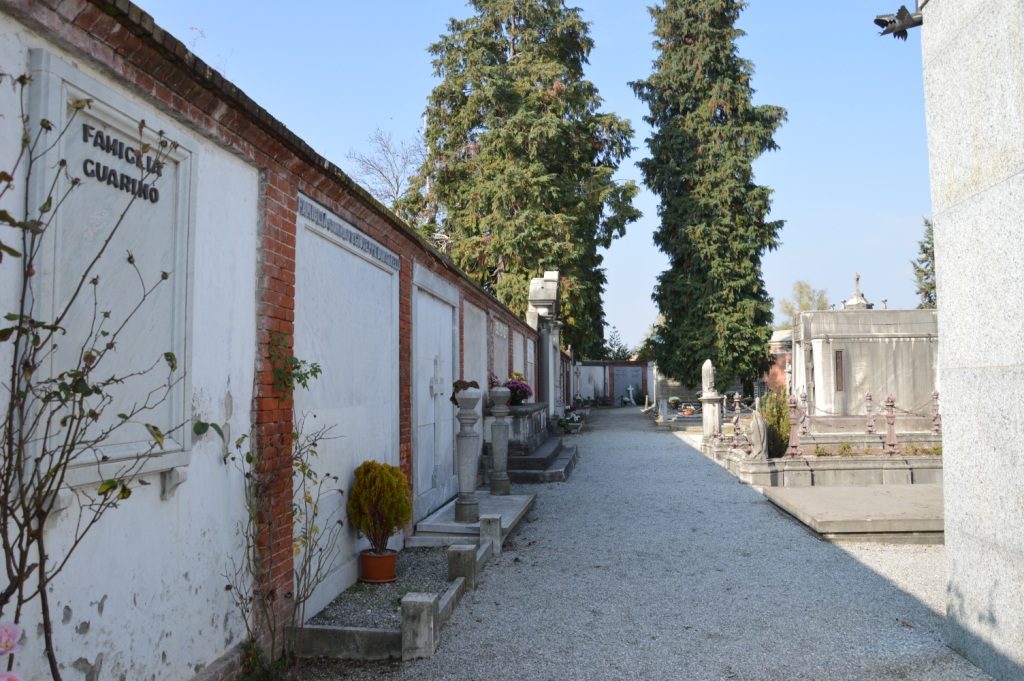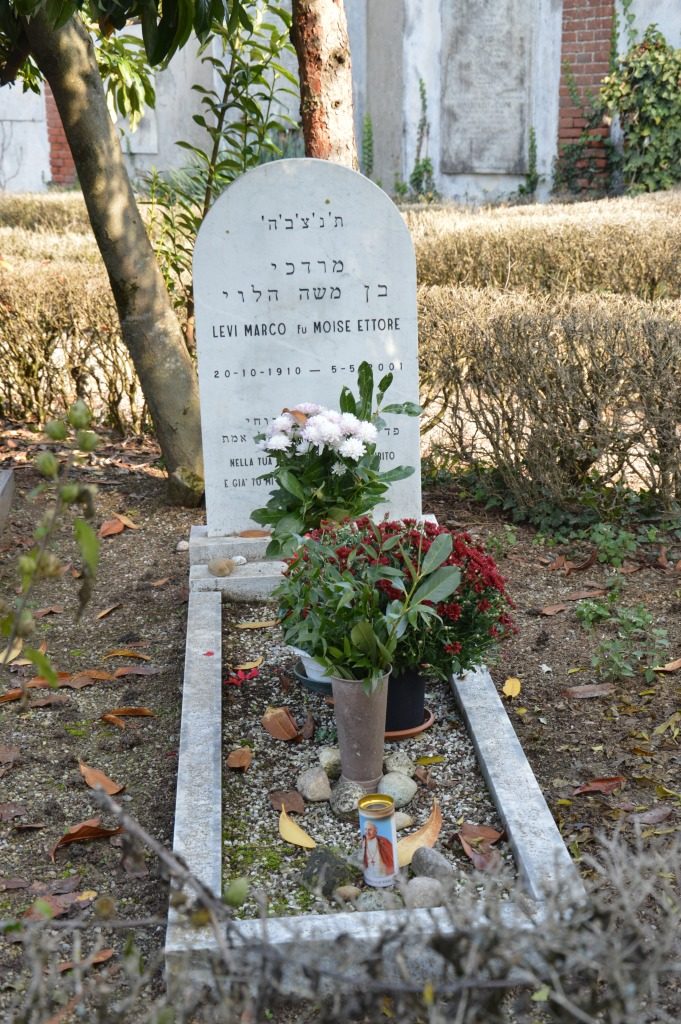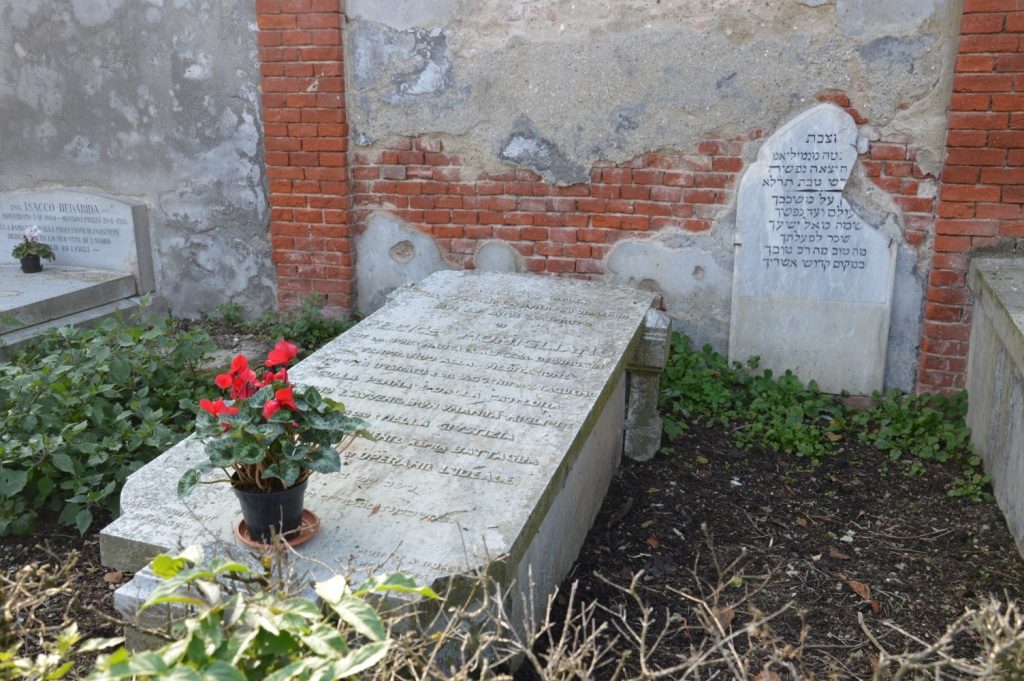
Tuesday was Tutti i Santi, All Saints’ Day. Schools, shops, and offices close for this annual day of solemn remembrance, families visit the graves of their forebears to leave fresh flowers, florists do big business in chrysanthemums, the traditional choice, and cyclamen, another cool weather bloom.
Following a suggestion from my friend M___ we joined the crowds at the cemetery on the outskirts of town in order to visit the Jewish cemetery, contained within as the old ghetto was contained inside the city walls. We carried a pot of chrysanthemums to leave at the grave of Marco Levi, the well-respected, self-proclaimed “last Jew of Mondovi`”. Upon his death in 2001 Levi’s estate created a foundation to establish the Museo della Ceramica, where I am a docent for English-speaking tour groups.

At the custodian’s office I asked for the Jewish cemetery, received a key and some simple directions: walk along the perimeter wall until you find a gate. We did as we were told and soon found a high iron gate set in the wall; I turned the key in the lock and we stepped inside. Small gravestones in Hebrew lean beside flat tombs and large memorial markers. Clipped hedges, mostly leafless now, divide the cemetery into sections. We moved along the graveled pathways, reading names and family histories, until we came to Marco Levi. Few of the other graves showed signs of recent attention but Levi’s is well cared for; we placed our flowers on his stone beside a vase of mums and one of eucalyptus and a pot of crimson cyclamen.
Across the way and behind a thick hedge we saw the tomb of Felice Momigliano, a prominent member of the 19th-century Jewish community whose name we recognized from a plaque at his residence in via Vico, a few doors down from our first home in Mondovì. Momigliano’s grave was unattended, a few dead leaves scattered across the large stone, lichen darkening the pale surface, the letters fading and eroded by weather. Among all the other neglected memorials this one seemed sadder to me. That a man once so renowned should be forgotten seemed wrong somehow. After all, we knew of him, recognized his name and his place in the Jewish history of Mondovì.
On Thursday morning I returned. I found the key to the gated cemetery hanging just where I’d left it; I opened the iron portal and pushed through the bare hedge, swept leaves from Momigliano’s tomb and left a pot of cyclamen at the foot of his stone to honor his memory. I felt better.

LESLIE MCBRIDE WILE
Pictures by Leslie Wile
Read this article also on Margutte.com